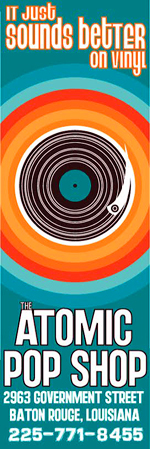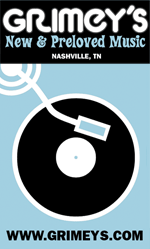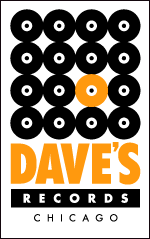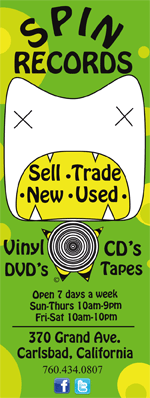
Celebrating John Coltrane, born on this day in 1926. —Ed.
When diving into the work of John Coltrane, many begin with a canonical record, likely from his tenure with the Atlantic or Impulse labels. There’s certainly no mistake in that, but anybody building a shelf of the saxophonist’s vital stuff will end up procuring a significant percentage of the material he cut for Bob Weinstock’s New Jersey-based Prestige company. Craft Recordings’ attractively designed and thoughtfully assembled 5CD or 8LP Coltrane ’58: The Prestige Recordings, a substantial hunk of it is easy to obtain. Chronologically sequencing the man’s leader or co-leader sessions from January to December of the titular year, it coheres into a powerful statement of budding greatness.
 Make no mistake; nothing about Coltrane ’58: The Prestige Recordings suggests that it is a purchase one would make on a whim. A hefty clothbound release with an ample LP-sized booklet of photos, production notes, and excellent words from Ashley Khan, plus the meat of the matter, eight LPs tucked into manila sleeves (the 5CD set is the same with scaled-down dimensions), it’s a package clearly made for both longtime lovers of John Coltrane and Modern Jazz in general and for folks whose recently developed interest in these subjects is unquestionably keen.
Make no mistake; nothing about Coltrane ’58: The Prestige Recordings suggests that it is a purchase one would make on a whim. A hefty clothbound release with an ample LP-sized booklet of photos, production notes, and excellent words from Ashley Khan, plus the meat of the matter, eight LPs tucked into manila sleeves (the 5CD set is the same with scaled-down dimensions), it’s a package clearly made for both longtime lovers of John Coltrane and Modern Jazz in general and for folks whose recently developed interest in these subjects is unquestionably keen.
As its full title makes plain, Coltrane ’58 documents the saxophonist’s time with the Prestige label, though only partially so; none of the extensive sideman work is here, and neither are his earlier leader sessions (his first album under his own name, Coltrane, was released through Prestige late in ’57). And so, not a completist thing, which would be unwieldly, as the man’s complete recordings for Prestige required 16 CDs, but instead, something better; a digestible and enlightening portrait of a year’s work in the driver’s seat under the supervision of Weinstock and recorded by Rudy Van Gelder.
Prestige didn’t keep alternate takes, so there’s nothing unreleased here. That means those longtime fans who already own all of the original LPs (or picked up either the complete Prestige 16CD box from ’91 or the leader-date truncation Fearless Leader from ’06) will need to calculate whether dropping cash for Coltrane ’58 is in their interest.
Allow me to argue in the set’s favor. The lack of extras equates to prime listenability, meaning there’s not a single instance across these eight sides of back to back versions of the same tune (unreleased alternates can be cool, but to be frank they achieved that status because somebody at some point thought them to be inferior). Furthermore, it’s never been so easy, from the standpoint of vinyl anyway, to soak up Coltrane’s Prestige work chronologically, and doing so really adds value to his association with the label.
Along with not saving alternate takes, Prestige didn’t allow for rehearsal time, a factor that has led many over the decades to underrate the label and by extension, the material collected here. It’s a circumstance somewhat encouraged by the manner in which Coltrane’s Prestige albums emerged in the marketplace, with the majority of the albums not hitting stores until ’62-’65.
To borrow a phrase from Ashley Khan’s notes, no rehearsal time means Coltrane ’58 is loaded with “burners, ballads and blues.” This makes for a decidedly post-bop situation that’s enhanced by a spark of confidence in Coltrane’s playing; he’d returned from Philadelphia having kicked his addiction to heroin, with this habit a major factor in Miles Davis electing to temporarily break up his quintet in ’57. Additionally, the saxophonist was fresh from working in Thelonious Monk’s band and cutting not just Coltrane for Prestige but the masterpiece Blue Train for Blue Note.
This spark of confidence was intensified by Coltrane being deep in his “sheets of sound” period. The term was coined by critic Ira Gitler; it variously applied to Coltrane’s use of groups or clusters of notes rather than single melodic lines in his solos (per Leroi Jones), the times where he was playing faster than the rhythm section or playing different scales over each chord (per Lewis Porter’s writings for Fearless Leader, referenced by Khan in the notes for this set), or just his “rapid fire playing in general” (quoting Khan). Overall, the power, density and fleetness distinguished Coltrane from his post-bop peers.

But while the saxophonist was breaking ground, he’s far from an iconoclast on Coltrane ’58, which is where the blues, and especially the ballads come in. And on the subject of ballads, this set can serve as a sort of corrective to the idea, which has been occasionally floated over the decades (I’ve read it most recently in connection to “My Favorite Things”) that Coltrane’s choices in classic or “straight” material were in some way acts of subversion.
Of course, that wasn’t his intention, but those who mainly engage with Coltrane as an avant-gardist often have a difficult time dealing with Coltrane the classicist, who like so many of his post-bop peers, picked ballads (and standards in general) for no other reason than he loved the tunes and was invested in tradition. Not that he always played them straight; “Russian Lullaby” is a superb and still striking example of a standard (from Irving Berlin) as burner that broke new ground (Kahn describes it as a bar-raiser for a “whole generation of improvisors”) while expanding upon (not undermining) tradition.
“Russian Lullaby” was originally released on Soultrane in late ’58. That album is one of the few from this timeframe to contain the entirety of a single session date, in this case February 7th, though for the LP the order is different (“Russian Lullaby” was played first that day but unsurprisingly was Soultrane’s closer). The other two LPs to encompass a single session, Kenny Burrell & John Coltrane and the exemplary “blowing date” Black Pearls (with “Sweet Sapphire Blues” breaking 18 minutes), were released much later, in ’62 and ’64 respectively.
The rest was initially unveiled on such albums as Lush Life, The Believer, Settin’ the Pace, Standard Coltrane, Bahia, Stardust, and The Last Trane. Those are all (to slightly varying degrees) fine releases but hearing the sessions that shaped them unwind chronologically really elevates the artistry to the level of masterful, through Coltrane’s input naturally, but also due to unity of personnel.

The January 10th quintet session features trumpeter Donald Byrd, pianist Red Garland, and bassist Paul Chambers from Miles’ band, plus drummer Louis Hayes. The February date contracts to a quartet, keeping Garland and Chambers and adding drummer Art Taylor, effectively the Red Garland Trio, who also contributed to the March 26th quartet session; the May 23rd date that produced Black Pearls expanded the quartet with Byrd. The March 7th recording with guitarist Burrell kept Chambers and added drummer Jimmy Cobb and pianist Tommy Flanagan (all save Burrell played later on Giant Steps).
On July 11 there was something of a marathon session yielding eight tunes with the rhythm section of Garland, Chambers, and Cobb plus trumpeter and flugelhornist Wilber Harden. Jump forward to December 28 and Coltrane is in the studio with Garland, Chambers, and Taylor plus the young trumpeter Freddie Hubbard.
These last two dates underscore the saxophonist’s desire to strengthen relationships with up-and-comers over a desperation to impress; Harden was capable but tentative (no burners this time out) and Hubbard had not reached his full potential, meaning he was not yet at the level of Byrd (or for that matter, Lee Morgan on Blue Train). This may read as a limiting factor for Coltrane ’58, but outside of individual soloing not really, as everyone involved understood the circumstances and the material was contoured accordingly.
Listened to in order over the course of an evening, the eight LPs that comprise Coltrane ’58: The Prestige Recordings make a superlative case for this chapter in John Coltrane’s artistic trajectory. The bolder and more visionary work would arrive later, but the music here, while inextricably linked to what was to come, stands tall on its own. As a vivid serving of unflustered post-bop glory, it’s utterly major.
GRADED ON A CURVE:
A












































